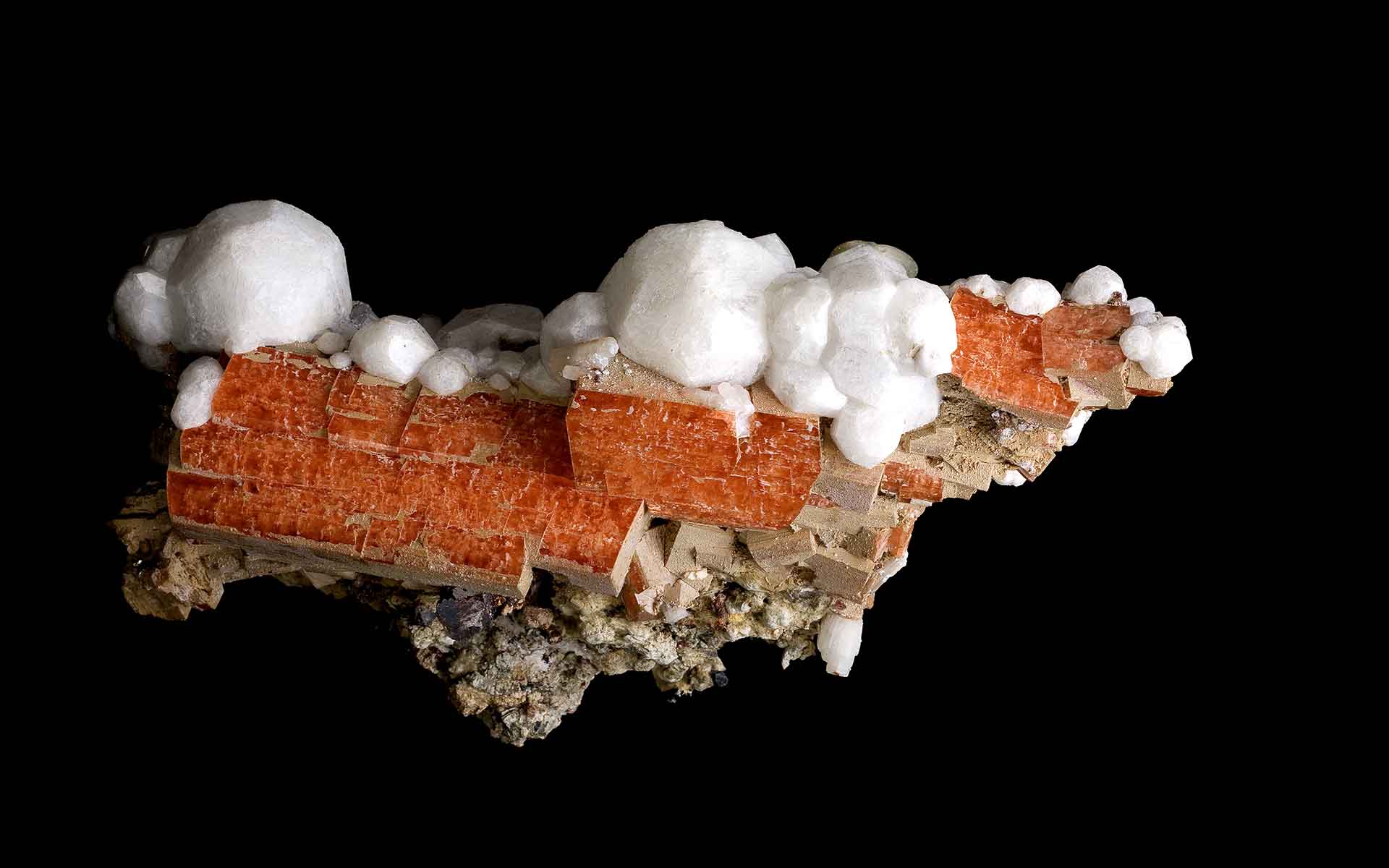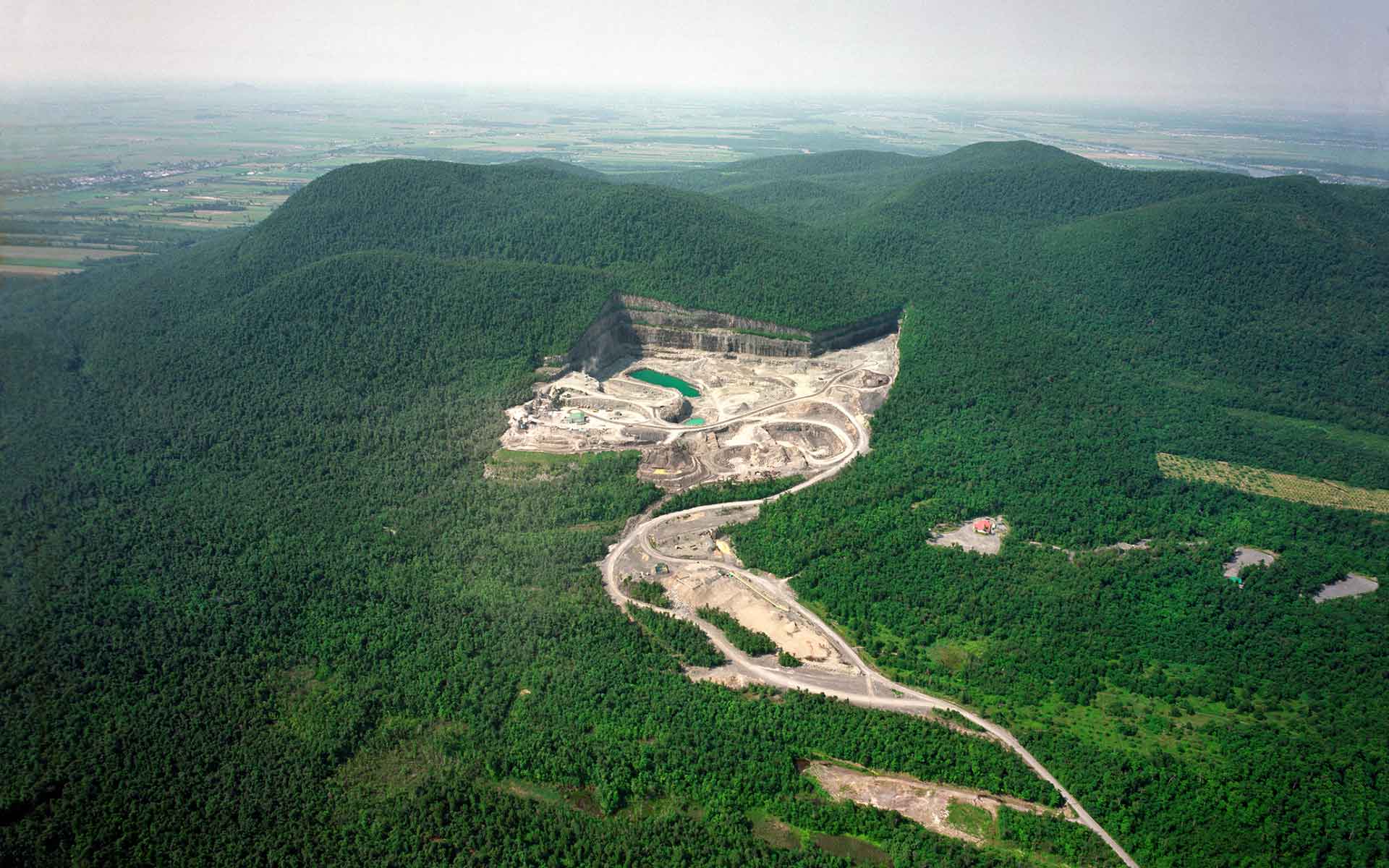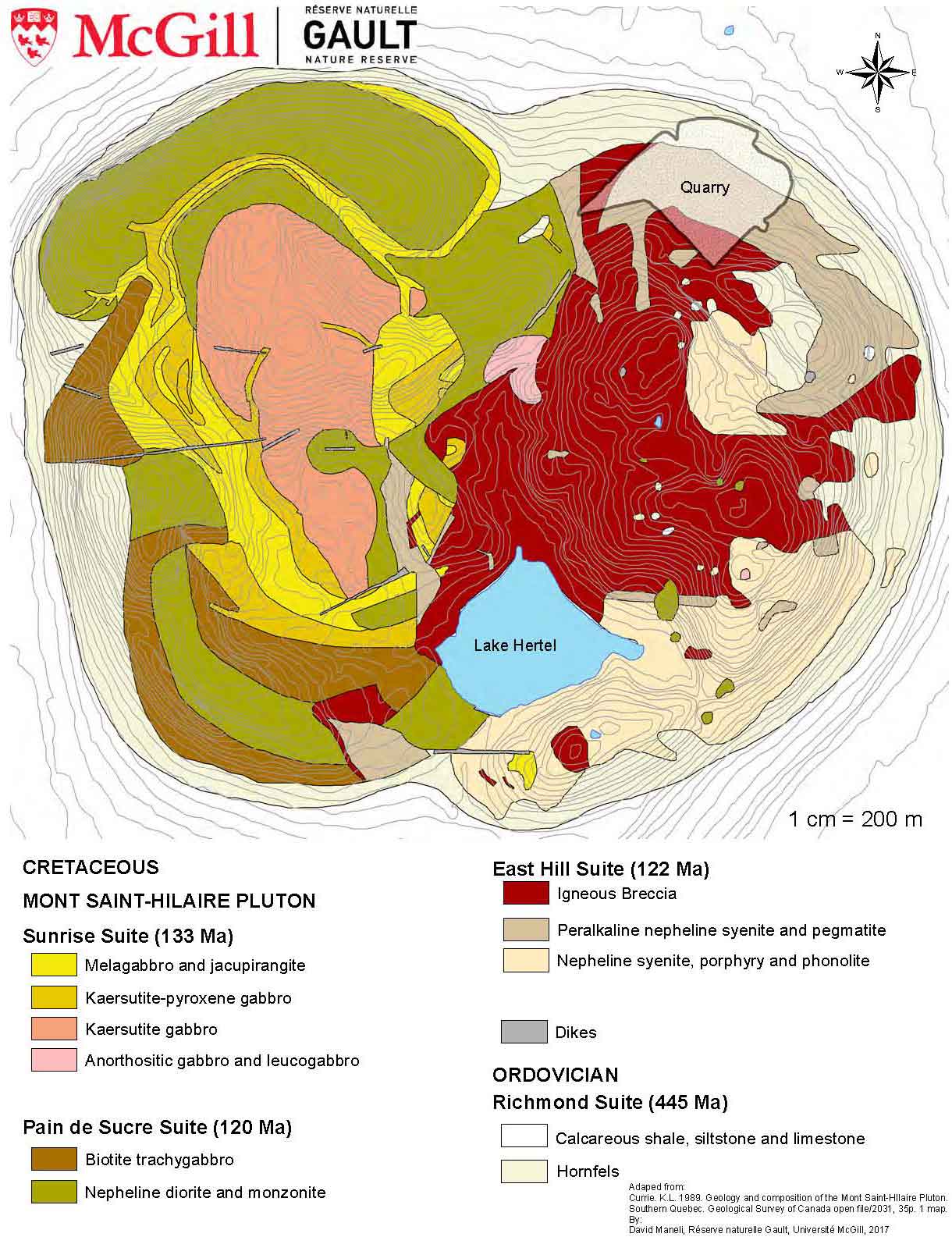
Serandite (orange) and analcime (white). Specimen is 22.5 centimeters in length. Collected in 1973. Canadian Museum of Nature, specimen CMNMC 37124. Photographer: Michael Bainbridge.
Geological Period
Cretaceous
Main geological interest
Mineralogy
Igneous and Metamorphic petrology
Location
Québec, Canada
45°33’02”N, 073°09’20”W
Serandite (orange) and analcime (white). Specimen is 22.5 centimeters in length. Collected in 1973. Canadian Museum of Nature, specimen CMNMC 37124. Photographer: Michael Bainbridge.
With 445 mineral species, it is the preeminent, single-site mineral locality in the world.
With 445 known species, Mont Saint-Hilaire has become renowned throughout the world for both the diversity of its minerals and the superb quality of its crystals. Mineral specimens from here are to be found in most major collections world-wide, both public and private. Currently, of the 445 known species, 73 were originally described from this locality. Of those 73, 35 have not been found elsewhere. Mont Saint-Hilaire has had a profound effect on the study of alkaline rocks through hundreds of scientific papers describing the mineralogy of the locality and those elucidating its origins (Horváth et al., 2019).
- Geological description
Mont Saint-Hilaire is a monadnock, 415 meters high and approximately 3 kilometers in diameter, lying 40 kilometers east of Montréal, Québec. It is one of 11 members of the Monteregian Hills Petrographic Province, a series of related alkaline igneous complexes forming an east-southeast-trending belt, approximately 260 kilometers long (Feininger and Goodacre, 1995). They range in composition from carbonatite in the west to silica-saturated rocks in the east, and Mont Saint-Hilaire has the strongest expression of alkalinity. Their origins are postulated by some to be related to a mantle hot spot, which introduced a large volume of magma into a crustal fracture system (Foland et al., 1986). Mont Saint-Hilaire intruded sedimentary Ordovician limestones and shales of the St. Lawrence Lowlands approximately at 125 Ma (Currie et al., 1986). Quarrying operations have exposed many interesting features of the intrusion some of which are still preserved in the walls of the quarry, such as large hornfels and marble xenoliths and associated pegmatites and igneous breccias. The superb crystals and rare species for which Mont Saint-Hilaire is famous are found in the millimetre to metre size cavities in the various rock types, particularly in the alkaline pegmatites.
- Scientific research and tradition
Minor reports in the scientific literature of Mont Saint-Hilaire date back to 1859, but it was not until the intrusion was exposed by quarrying, beginning in 1961, that more extensive mineralogical investigations were begun. Mineralogical research has continued unabated and at a furious rate until the present day.
- Reference
Currie, K.L., Eby, G.N. and Gittins, J. (1986) ‘The petrology of the Mont Saint Hilaire complex, southern Quebec: An alkaline gabbro-peralkaline syenite association’, Lithos, 19(1), pp. 65–81. Available at: https://doi.org/10.1016/0024-4937(86)90016-2.
Feininger, T. and Goodacre, A.K. (1995) ‘The eight classical Monteregian hills at depth and the mechanism of their intrusion’, Canadian Journal of Earth Sciences, 32(9), pp. 1350–1364. Available at: https://doi.org/10.1139/e95-109.
Foland, K.A. et al. (1986) ‘40Ar/39Ar ages for plutons of the Monteregian Hills, Quebec: Evidence for a single episode of Cretaceous magmatism’, GSA Bulletin, 97(8), pp. 966–974. Available at: https://doi.org/10.1130/0016-7606(1986)97<966:AAFPOT>2.0.CO;2.
Horváth, L. et al. (2019) Mont Saint-Hilaire: History, Geology, Mineralogy. (The Canadian Mineralogist, Special Publication, 14).
- Author(s)
Robert A. Gault.
Research Associate (retired). Canada.
László Hórvath.


